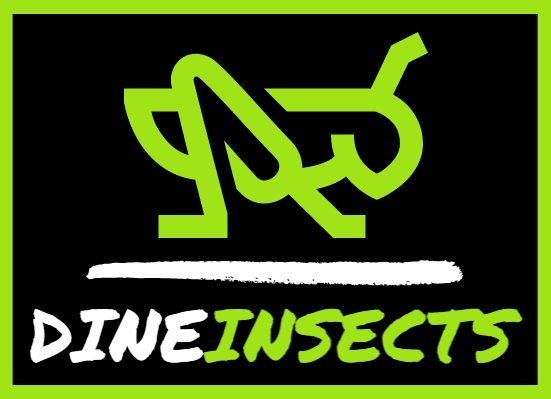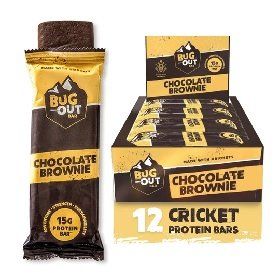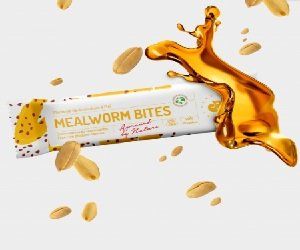Global entomophagy
Check out the best manufacturers, products and restaurants for edible insects!

Edible Insects in my Country 🐛:
AUSTRALIA I AUSTRIA I BELGIUM I BRAZIL I CANADA I CHINA I CZECH REPUBLIC I DENMARK I FINLAND I FRANCE I GERMANY I INDIA I INDONESIA I ISRAEL I ITALY I JAPAN I MEXICO I NETHERLANDS I NEW ZEALAND I NORWAY I PORTUGAL I SOUTH KOREA I SOUTH AFRICA I SPAIN I SWEDEN I SWITZERLAND I THAILAND I UNITED KINGDOM I USA
- Advertising -
Eat insects. Why? Insects are unbeatable! They contain an enormous amount of protein, minerals, vitamins and all the essential amino acids. The combination of sustainability and nutrient richness enables healthy and environmentally conscious nutrition.
In the western world, edible insects are still unusual and often associated with disgust. Insects are considered a delicacy in many countries and are part of the diet of over 2 billion people. With a nutrient-rich insect flour base, you can eat very healthily and at the same time protect the climate and the environment.
Entomophagy describes the practice of eating insects. Eating insects enables a sustainable and healthy diet. Here you get a global overview of the best manufacturers, products and restaurants. It's time for revolution 🦗!
Entomophagy knowledge🧐
FAQs: Eat insects as food
Where is entomophagy commonly practiced?
Around 3,000 ethnic groups practice entomophagy. Human insect-eating is common to cultures in most parts of the world, including Central and South America, Africa, Asia, Australia, and New Zealand.
Is entomophagy the practice of eating bugs?
Entomophagy is the technical term for eating insects. Humans have harvested the eggs, larvae, pupae and adults of certain insect species from forests or other suitable habitats to eat for thousands of years.
What are the benefits of eating insects?
Insects are considered highly nutritional. The majority of them are rich in protein, healthy fats, iron, and calcium, and low in carbohydrates. In fact, insects are more nutritious than commonly consumed meats, such as beef.
Are insects a suitable source of food for humans?
Edible insects contain high quality protein, vitamins and amino acids for humans. Insects have a high food conversion rate, e.g. crickets need six times less feed than cattle, four times less than sheep, and twice less than pigs and broiler chickens to produce the same amount of protein.
Is eating bugs the future?
They revealed that edible insects have a high nutritional value and are a viable option as a sustainable source of protein. ... Although humans have eaten insects throughout history, and approximately two billion people around the globe regularly eat them today, research on the subject is relatively new.
Are insects healthier than meat?
So while there's no evidence that 'insects are healthier' than meat, using the different models showed that insects are great – in some circumstances. If you need a food source that supplies essential nutrients such as vitamins and minerals, as well as high protein levels, insects seem to be a good call.
Are bugs meat?
Meat is muscle, and insects must have muscles to move - its just that their muscles are inside their external skeleton rather than outside their internal skeleton. ... So, Insects are considered meat.
Can insects replace meat?
It finds that insects could indeed fill that dietary need. 1,900 insect species have been documented as a food source globally. That they're a source of protein is well established, but if the world is to turn to bugs to replace meat, the critters will need to offer more than protein.
Are bugs the future of protein?
As plant-based "meat" takes off, Barclays looks to bugs as a major part of the future of alternative proteins. The insect protein market could be worth $8 billion by 2030, up from less than $1 billion in 2019, according to Meticulous Research data cited in a Barclays report.
Can you eat bugs raw?
In the case of insects, not only are they edible, many taste good and are incredibly nutritious. People have eaten a variety of unknown beetle grubs (raw and cooked – the cooked ones taste like bacon fat), crickets, larvae, earthworms (which taste like chicken skin cooked), bees and bee larvae, ants and snails.
What is the best tasting bug?
Caterpillars are considered delicacies southern African countries, where they sell for high prices. Said to be the best-tasting insect, the “wax worm,” or wax moth caterpillar, feeds on beehives' wax and honey. Sweet as that sounds, one blogger who proclaimed them her favorite described the taste as “enoki-pine nut.”
Eating insects is perfect for athletes!
It's not just a high protein content that counts. This must consist of high-quality proteins so that it can be optimally broken down by our body. This fulfills the insect protein and is particularly suitable as a sports nutrition in combination with the essential amino acids, vitamins and minerals.
The insect protein is an excellent alternative to any whey and soy product, which unfortunately makes up the majority of sports nutrition.
A cross allergy to insects could develop in people with allergies to shellfish and crustaceans. Allergy sufferers should therefore be careful: those who are allergic to shrimp often also react to insects. These allergies can be caused by chitin or the muscle protein tropomyosin. For this reason, insects as an ingredient must always be clearly labeled on food packaging. According to the Food and Agriculture Organization of the United Nations (FAO), the risk of being allergic to insects is extremely low. Bon Appetit👌.
Number 1 website for entomophagy:
Ok, the pronunciation of entomophagy is difficult, but the subject is clear. The advantage of eating insects is the combination of sustainability and nutrient richness. History and studies show: entomophagy is a healthy diet. We hope you enjoy our search for the world's top suppliers of edible insects. The next time you hear about entomophagy, you won't need a dictionary. You know the answer: Whether entomophagy, edible insects, eat insects or insects as food ...dineinsects.com!











